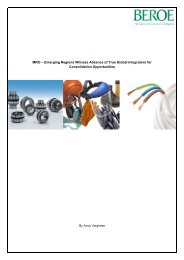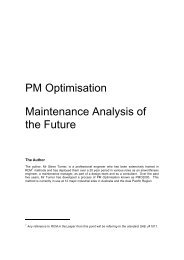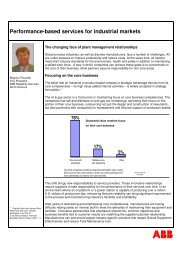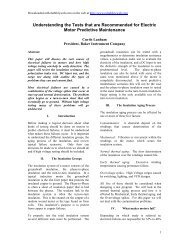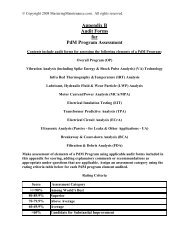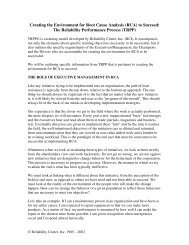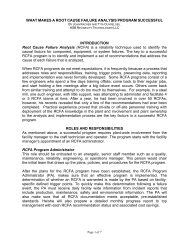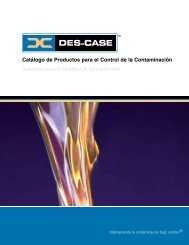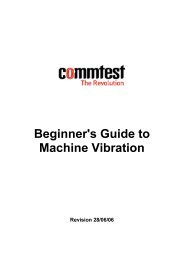Effective Maintenance Program Development/Optimization
Effective Maintenance Program Development/Optimization
Effective Maintenance Program Development/Optimization
You also want an ePaper? Increase the reach of your titles
YUMPU automatically turns print PDFs into web optimized ePapers that Google loves.
Downloaded from Reliabilityweb.com on the web at http://www.reliabilityweb.com5.6.2 Relative RiskThe probability of failure is used in combination with the total failure consequence of asystem/equipment to determine the RR value of the system/equipment. CARA uses theconcept of the relative risk (RR) to identify system/equipment that has the greatestpotential impact on the business goals of the company.The RR of a system or equipment is the product of its Total Consequence Score (TC) andthe Frequency/Probability (F/P) Number. It is called “relative risk” because it only hasmeaning relative to the other equipment evaluated by the same method.The Total Consequence (TC) is the sum of all the scores assigned to each of the criteriaincluding: Safety (S), Environmental (E), Quality (Q), Throughput (T), Customer Service(CS) and Operating Cost (OC).TC = S + E + Q + T + CS + OCRR = TC * F/P6.0 <strong>Maintenance</strong> Tasks <strong>Development</strong>/<strong>Optimization</strong> (MTD/O)The MTD/O process described in this paper establishes a structured framework fordeveloping or assessing maintenance programs for in-service or newly commissionedassets. The process emphasizes the use of operation and maintenance experiencedocumented in a form of standard maintenance tasks (SMT).6.1 <strong>Maintenance</strong> Tasks <strong>Development</strong>/<strong>Optimization</strong> (MTD/O) OverviewThe flowchart in Figure 5 describes the steps involved in carrying out the MTD/Oprocess.The steps involved in the development/optimization of maintenance tasks are as follows:1. A system is identified for review by selecting an element from the plant technicalhierarchy. As described earlier, the selected system boundary should be clearlydefined. The selected system includes all lower level elements.2. A risk analysis is performed per section 4 of this paper. If an analysis was conductedin the past, review of failure frequencies in lieu of the current system/equipmentitems’ condition is conducted and the frequency scores changed as necessary. Thesystem/equipment items selected are then ranked by their risk ranking.3. In the case that the system under review belongs to an equipment class group that hasa Standard <strong>Maintenance</strong> Task (SMT) documented, it is only necessary to verify forlow risk systems/equipment that any specific company, standards, and regulationPage 7



